Pluto (bottom Image) With Various Other Non-planets.







Pluto (bottom image) with various other non-planets.
Since everyone has their knickers in a knot over Pluto not being a planet, here are various different celestial objects who are also not classified as planets. You’ll notice, just because it’s not called a “planet” doesn’t mean it isn’t cool.
Let us be reminded, there is no heirarchy of celestial bodies. It wasn’t necessarily “demoted” from planethood, it was simply reclassified as something else. There’s literally no reason to be emotionally attatched to the idea of Pluto’s planetary classifaction.
But what “classifies” a planet anyway?
According to the International Astronomical Union, there are 3 basic requirements that it must meet: 1) It orbits the sun 2) Sufficient mass to assume a “hydrostatic equilibrium” (meaning it’s mostly shaped like a globe) 3) Has “cleared its neighborhood” in its orbit.
The third one is where Pluto fails. What they mean by “clearing the neighborhood” is that the orbital path is good and clear. Every planet will still collide with something now and then but their orbital paths are not occupied by anything that is similar to the size of the planet itself. They’re not really in danger of running into much of anything except maybe an asteroid or a comet that might enter their path and collide.
In addition, here is an image showcasing the dwarf planets of the solar system. Pluto isn’t alone in it’s classification.

So don’t be sad over Pluto not being a planet, you’re just being melodramatic. Wipe your tears away with some scientific literacy. ;)
More Posts from Alitheastronomer and Others

“The more I look at Earth, and certain parts of Earth, the more I feel like an environmentalist. It’s just a blanket of pollution in certain areas. We can fix that if we put our minds to it.“
-Astronaut Scott Kelly, whose one year long mission in space ended today (01/03/2016)

Tilt-shift photo of the space shuttle Endeavor by NASA
I love how stars are billions of miles apart and we’re like “that’s a soup ladle”.





A Montage of the Carina Nebula
The Carina Nebula (known by astronomers as NGC 3372) is sometimes called the Great Nebula in Carina or the Grand Nebula. These images taken by the Hubble space telescope show the magnificent structure within the Carina Nebula. These images contain regions of dense star formation, interstellar winds, massive particle clouds and much more. Many of these structures are hundreds of light-years across and make the size of our solar system look pathetic in comparison. The Carine Nebula is about 10,000 light-years away from earth and is located in the constellation Carina.
Credit: NASA/ESA/Hubble
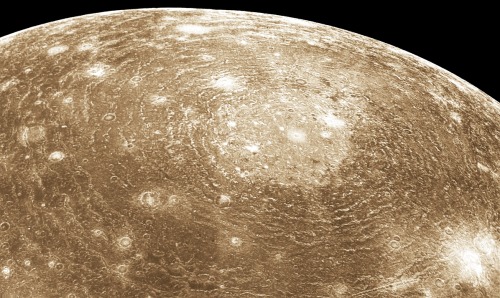
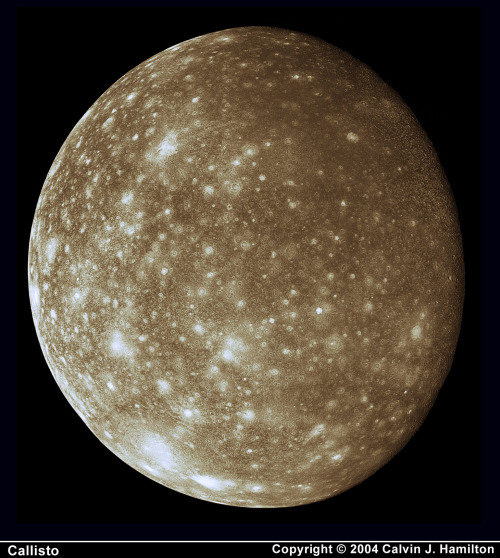
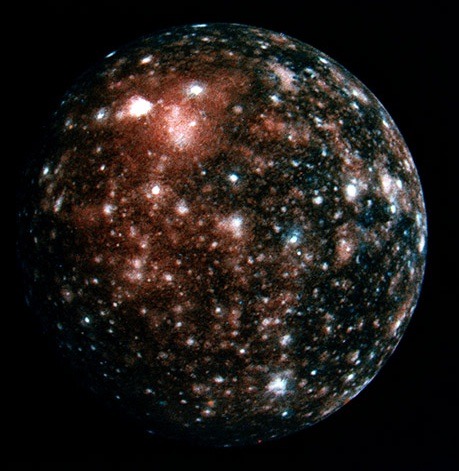

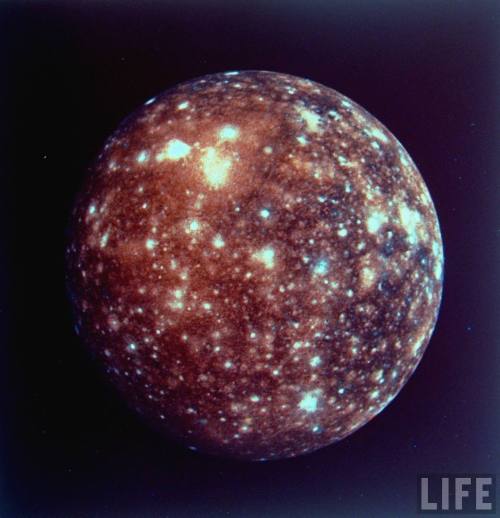
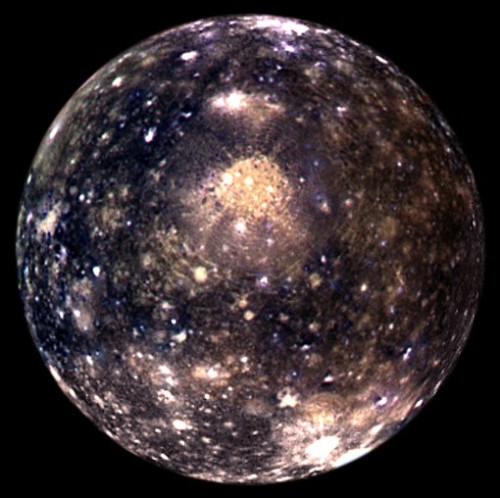

Jupiter’s moon, Callisto.

NGC 1398 in Fornax.
Source: https://imgur.com/7dzEl2s
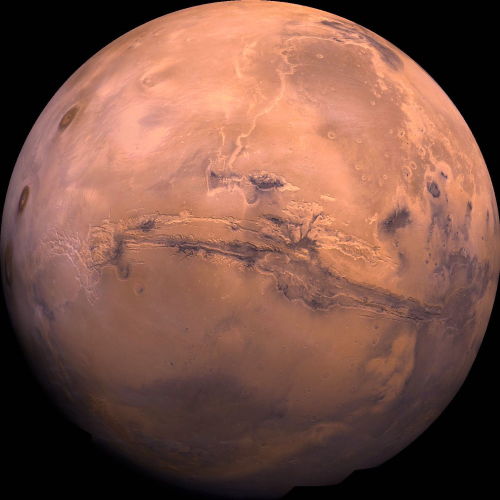
It's amazing how these galaxies, that are so unfathomably huge to us, are actually really fragile and delicate in the scheme of things
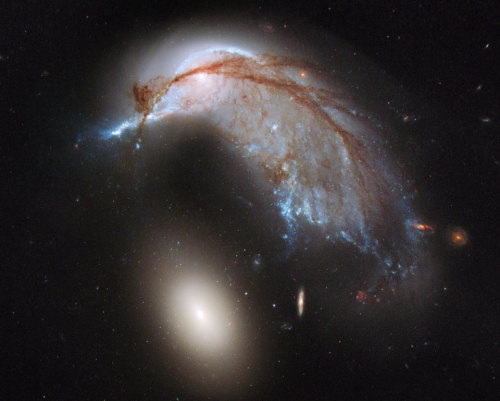
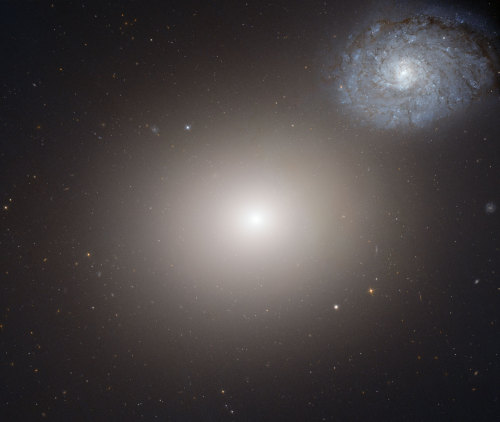
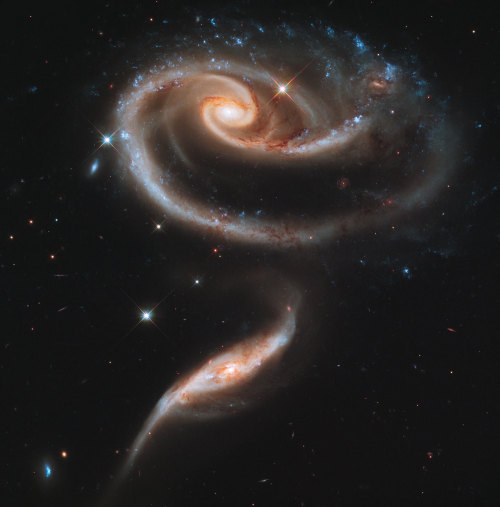
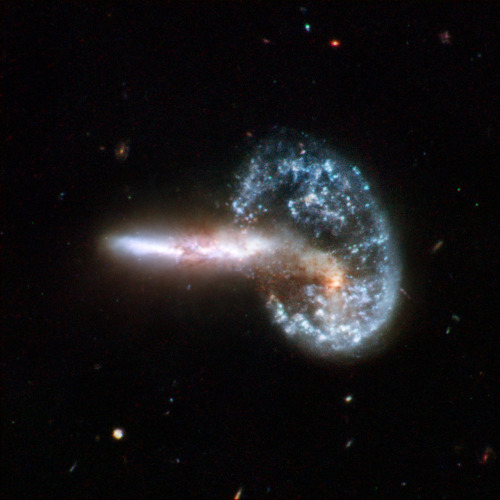

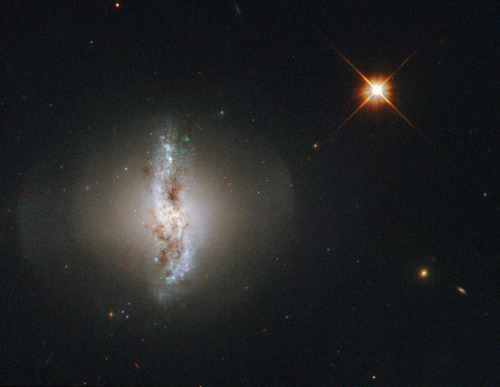
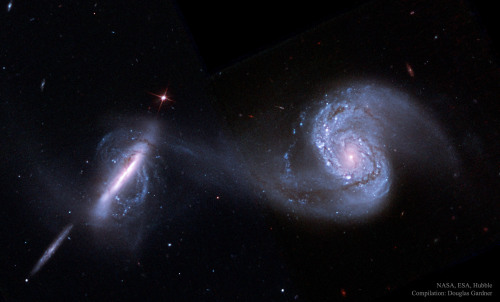



Top 10 Bizarre Galaxy Pairs From Hubble
“The Arp catalog illustrates galaxies in many different stages of a collision:
* prior to their first close pass, * in the collision process, * subsequent to an interaction but before merging, * and in the final merger stages.
Unlike ellipticals, spirals are easily disturbed, often becoming destroyed entirely by such an interaction.”
When you take a glimpse into the deep Universe, beyond the gas, dust, stars and planets of our own galaxy, you enter the realm of the galaxies. In general, they come in two types: the spirals, with neat, orderly arms, and the ellipticals, with a symmetric, bulging shape. But for everything that exists in the Universe a particular way in general, there are exceptions. In the 1960s, astronomer Halton Arp became fascinated with these exceptions, creating a catalog of 338 examples: the Atlas of Peculiar Galaxies. We now know that most of these are galaxy pairs or triplets in the process of major mergers, displaying features such as tidal disruption, stellar bridges, starbursts and occasionally a rare, ring shape.
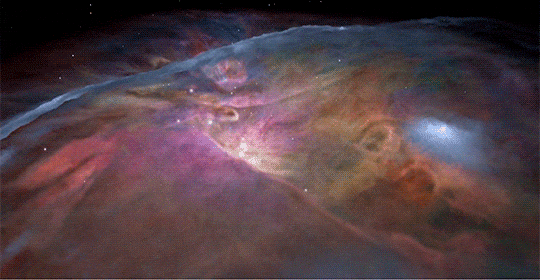
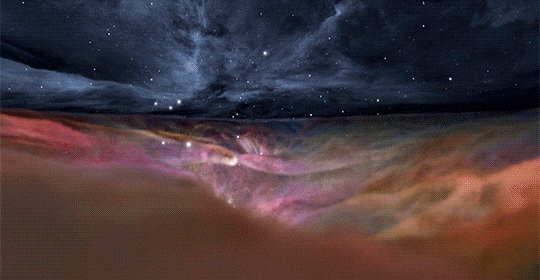



Flying Across The Universe Part 3 (From Top to Bottom: Fly through the Orion Nebula, Gum 29, and Sharpless 2-106)
(Part 1, Part 2)
Credit: HubbleSite.org
More cool space words:
Apastron: the point where two binary stars are farthest apart.
Azimuth: distance of an object in angular.
Bolide: an especially bright meteor, especially one that explodes in the atmosphere (also called fireballs!).
Catena: a chain or series of craters.
Ejecta: material that is strewn about a crater by an impact, usually a meteorite or other similar object.
Ephemeris: a table that lists the positions of the sun, moon, and planets by date.
Heliosphere: the magnetic bubble of space that contains our solar system, solar wind, and the entire solar magnetic field. It is so large it goes beyond pluto's orbit.
Meridian: an imaginary circle that goes through the north and south poles, and the zenith and nadir of a location.
Nadir: the point in the sky directly underneath you.
Nova: when a dying star suddenly flares in brightness. The star becomes thousands of times its original luminosity.
Prominence: an explosion on the surface of the Sun.
Singularity: the impossibly small space in the center of a black hole where density and gravity are infinite, and space-time curves infinitely.
Spicules: a jet of gas ejected from the sun's atmosphere that resembles grass.
Supernova: one of the most powerful forces in the universe. When a star uses up all of its fuel it ends its life in a spectacular and devastating explosion.
Terminator: line on a planetary body that separates the light side from the dark side.
Umbra: the darkest part of a shadow.
Zenith: the point in the sky directly overhead.
Zodiac: an imaginary belt across the sky that the sun, moon, and planets are always in. The zodiac is made up of 12 constellations.
pretty space words
aphelion - the point in the orbit of a planet, asteroid, or comet at which it is farthest from the Sun. astral - relating to or resembling the stars. caldera - a large volcanic crater, especially one formed by a major eruption leading to the collapse of the mouth of the volcano. celestial - positioned in or relating to the sky, or outer space as observed in astronomy. constellation - a group of stars forming a recognizable pattern. cosmos - the universe seen as a well-ordered whole. equinox - the time or date at which the sun crosses the celestial equator, when day and night are of equal length. faculae - bright patches that are visible on the Sun’s surface. lunation - the interval of a complete lunar cycle, between one new Moon and the next. interstellar - occurring or situated between stars. nebula - a cloud of gas and dust in outer space, visible in the night sky either as an indistinct bright patch or as a dark silhouette against other luminous matter. perihelion - the point in the orbit of a planet, asteroid, or comet at which it is closest to the Sun. synodic - relating to or involving the conjunction of stars, planets, or other celestial objects.
-
 pipius reblogged this · 6 years ago
pipius reblogged this · 6 years ago -
 alice44 liked this · 6 years ago
alice44 liked this · 6 years ago -
 babu-r-itsme-blog liked this · 6 years ago
babu-r-itsme-blog liked this · 6 years ago -
 green4peace liked this · 6 years ago
green4peace liked this · 6 years ago -
 pipuisci reblogged this · 6 years ago
pipuisci reblogged this · 6 years ago -
 pipius liked this · 6 years ago
pipius liked this · 6 years ago -
 charlesdclimer reblogged this · 6 years ago
charlesdclimer reblogged this · 6 years ago -
 charlesdclimer liked this · 6 years ago
charlesdclimer liked this · 6 years ago -
 pearlwhitesoul liked this · 6 years ago
pearlwhitesoul liked this · 6 years ago -
 hellgrub liked this · 6 years ago
hellgrub liked this · 6 years ago -
 vrancioaia liked this · 6 years ago
vrancioaia liked this · 6 years ago -
 x1o7g reblogged this · 6 years ago
x1o7g reblogged this · 6 years ago -
 arcanewhorer liked this · 6 years ago
arcanewhorer liked this · 6 years ago -
 vanillangst reblogged this · 6 years ago
vanillangst reblogged this · 6 years ago -
 vanillangst liked this · 6 years ago
vanillangst liked this · 6 years ago -
 styx-n-stone reblogged this · 6 years ago
styx-n-stone reblogged this · 6 years ago -
 styx-n-stone liked this · 6 years ago
styx-n-stone liked this · 6 years ago -
 x1o7g liked this · 6 years ago
x1o7g liked this · 6 years ago -
 pdivy liked this · 6 years ago
pdivy liked this · 6 years ago -
 tsunmiki-miniwan liked this · 6 years ago
tsunmiki-miniwan liked this · 6 years ago -
 persiinuncielopienodistelle liked this · 6 years ago
persiinuncielopienodistelle liked this · 6 years ago -
 alicesea liked this · 7 years ago
alicesea liked this · 7 years ago -
 spacefg reblogged this · 7 years ago
spacefg reblogged this · 7 years ago -
 spacefg liked this · 7 years ago
spacefg liked this · 7 years ago -
 wassupladiesandgents-blog liked this · 7 years ago
wassupladiesandgents-blog liked this · 7 years ago -
 elfboi liked this · 7 years ago
elfboi liked this · 7 years ago -
 junopere liked this · 7 years ago
junopere liked this · 7 years ago -
 kiddmmaxx007-blog liked this · 7 years ago
kiddmmaxx007-blog liked this · 7 years ago -
 coltraned liked this · 7 years ago
coltraned liked this · 7 years ago -
 talfordcharlesbrownthe3rd liked this · 7 years ago
talfordcharlesbrownthe3rd liked this · 7 years ago -
 imean01052018 reblogged this · 7 years ago
imean01052018 reblogged this · 7 years ago -
 zero3570 liked this · 7 years ago
zero3570 liked this · 7 years ago -
 waffle--kun-blog liked this · 7 years ago
waffle--kun-blog liked this · 7 years ago -
 daintylittlefawn liked this · 8 years ago
daintylittlefawn liked this · 8 years ago -
 limorosetint liked this · 8 years ago
limorosetint liked this · 8 years ago -
 lazyriddler reblogged this · 8 years ago
lazyriddler reblogged this · 8 years ago -
 0neiroi reblogged this · 8 years ago
0neiroi reblogged this · 8 years ago -
 blookerton liked this · 8 years ago
blookerton liked this · 8 years ago -
 g4m3rftw reblogged this · 8 years ago
g4m3rftw reblogged this · 8 years ago -
 g4m3rftw liked this · 8 years ago
g4m3rftw liked this · 8 years ago -
 chuumichanga liked this · 8 years ago
chuumichanga liked this · 8 years ago -
 rowechelonform reblogged this · 8 years ago
rowechelonform reblogged this · 8 years ago